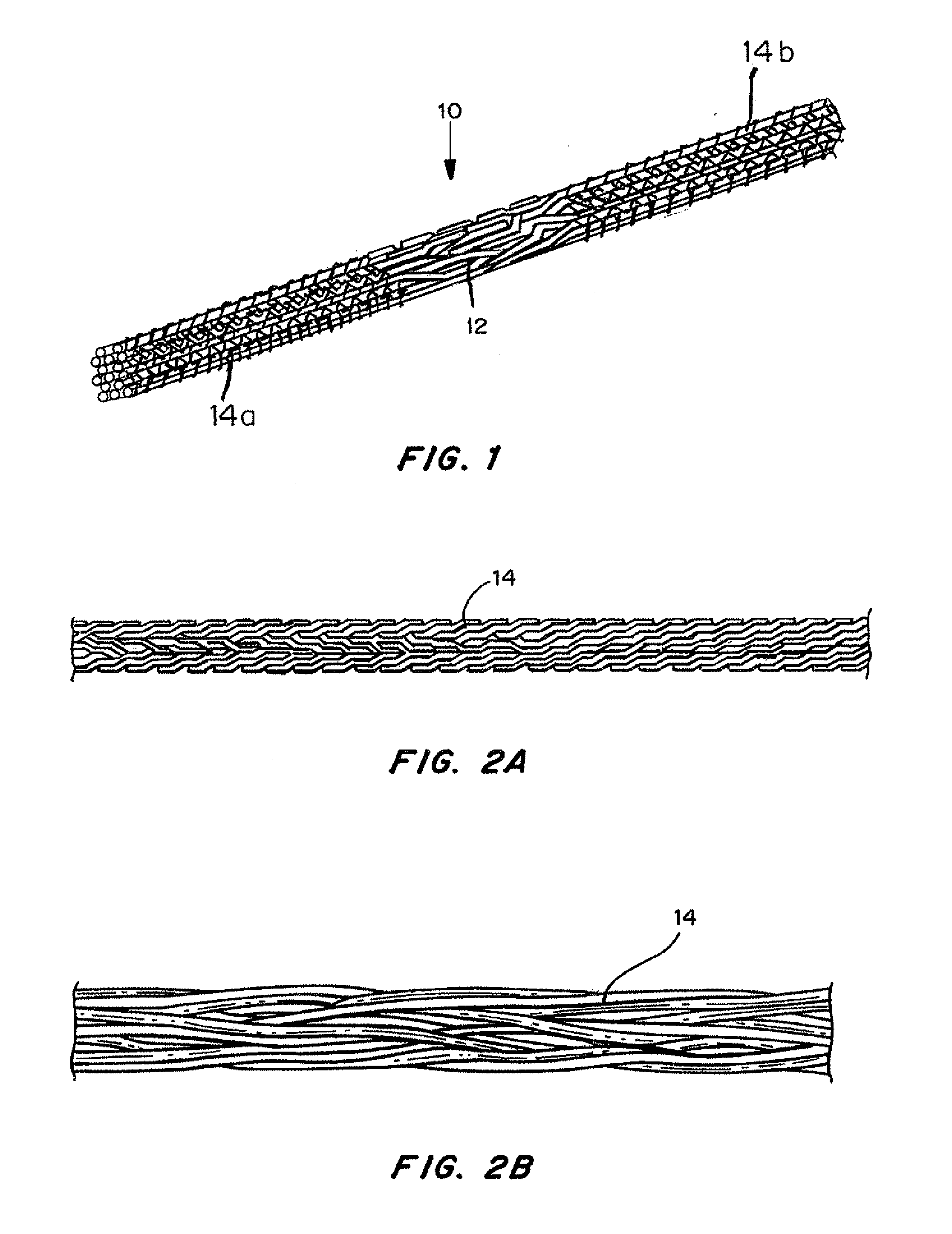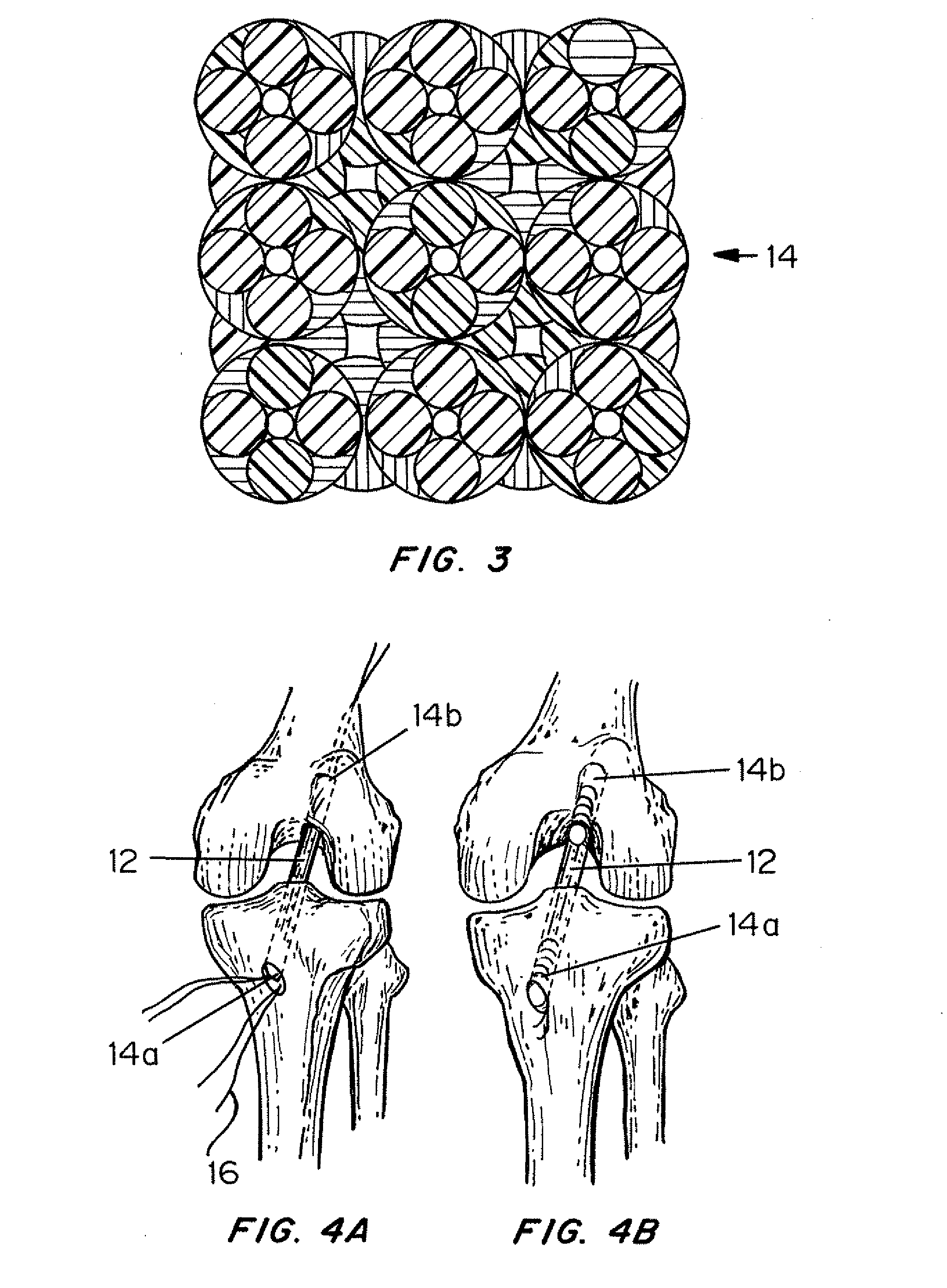Mechanically competent scaffold for ligament and tendon regeneration
a scaffold and mechanical technology, applied in the field of implants of medical devices and prostheses, can solve the problems of limited amount of tissue available for harvesting, low healing efficiency, and often rejected graft types, and achieve the effect of enhancing healing or augmentation
- Summary
- Abstract
- Description
- Claims
- Application Information
AI Technical Summary
Benefits of technology
Problems solved by technology
Method used
Image
Examples
example 1
Preparation of L-C Ligament Braid for Sheep Study
[0043]Materials and Methods
[0044]A one-meter length of L-C Ligament braid was prepared using a manual braiding machine to create a single fiber bundle until a total of 36 fiber bundles (each containing 24 fibers) have been created. Tie off the fiber bundle to the tie-off point located at the bottom of the braiding machine. Reduce the tension in the 36 fiber bundles. Fabricate 5-cm long section of “tight” braid. Tie-off end of the 5 cm long section of “tight” braid using a small piece of PLLA fiber that is two fibers measuring about 18 inches, doubled over to be 4 fibers 9 inches long. Fabricate 3-cm long section of “open” braid with one complete braiding revolution over the 3-cm long section. Tie-off end of the 3 cm long section of “open” braid using a small piece of PLLA fiber that is two fibers measuring about 18 inches, doubled over to be 4 fibers 9 inches long. Tighten. Cut off excess fiber leaving strands 1 inch long. Repeat unti...
example 2
Large Animal Study
[0045]A pilot large animal study involving 16 sheep was conducted at the University of New South Wales near Sydney Australia. The study was designed to evaluate, in a large animal model, the in vivo response of the L-C Ligament for use in tendon-bone reconstruction of an anterior cruciate ligament. The study evaluated the in vivo performance in terms of gross reaction in the knee joint, immunological reaction, radiographic evaluation in the bony tunnels, analysis of synovial fluid for polymeric debris, mechanical performance of the synthetic ligament, histological and pathological evaluation of the synthetic ligament in the bony tunnels and in the intra-articular space of the knee compared to a standard doubled over autograft tendon control at 12 weeks following implantation.
[0046]Materials and Methods
Animals: Sixteen sheep were divided into four groups: four autografts (controls), four L-C ligaments, four tigers, and four autografts augmented with a L-C ligament.
I...
PUM
 Login to View More
Login to View More Abstract
Description
Claims
Application Information
 Login to View More
Login to View More - R&D
- Intellectual Property
- Life Sciences
- Materials
- Tech Scout
- Unparalleled Data Quality
- Higher Quality Content
- 60% Fewer Hallucinations
Browse by: Latest US Patents, China's latest patents, Technical Efficacy Thesaurus, Application Domain, Technology Topic, Popular Technical Reports.
© 2025 PatSnap. All rights reserved.Legal|Privacy policy|Modern Slavery Act Transparency Statement|Sitemap|About US| Contact US: help@patsnap.com



